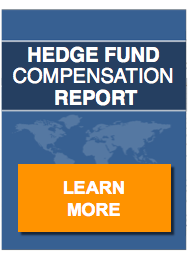The ancient Roman deity, Janus, is depicted as having two faces, one looking forward and one looking back. The Romans believed he presided over beginnings and transitions and many scholars suggest the month of January was named in his honor. As the hedge fund industry transitions into 2018, a look back and a look forward seems appropriate.
Looking Back
Hedge funds sailed through 2017 with twelve consecutive months of positive gains, concluding the year 2017 with average gains of 8.54 percent, the highest aggregate gains since 2014. Hedge fund assets under management have increased year-over-year since 2008, reaching a record high of around $3.5 trillion on net inflows of almost $95 billion in 2017. This represents a swing of around $150 billion, given net outflows of about $55 billion in 2016. According to Eurekahedge, 67 percent of these monies were invested in North American hedge funds.
At the same time, hedge fund closures outpaced new starts for the second year running. In each of the preceding 8 years, hedge fund starts outnumbered closures. Although some in the industry view this as a negative, others see this as a welcome trend, divesting the hedge fund industry of poor performers and raising the bar on aggregate performance numbers.
Looking Ahead
The slings and arrows from the media are likely to continue for the hedge fund industry, aided and abetted, no doubt, by the occasional miscreant trader, fund manager or portfolio manager. However, one may derive some satisfaction from a recent National Review article in which its author, David Bahnsen, actually decries “uninformed hedge fund bashing.”
The Tax Cuts and Jobs Act, signed into law late in 2017 has already proven itself a catalyst for business investment and hedge funds, having developed successful strategies to make gains in a bull market, can look forward to continued improvement in performance levels. Carried interest survived in the Tax Cuts and Jobs Act, but not to the benefit of hedge funds. Gains on investments held for at least one year were eligible for the reduced capital gains rate under the old code. However, under the new legislation, that holding period has been increased to three years. This works well for private equity firms, but offers little value to the hedge fund industry.
Speaking of private equity, the industry is up to its eyeballs in dry powder, the capital available for investment. This results in too much money chasing too few opportunities. As a result, the hedge fund industry is poised to reap the rewards of greater capital inflows in 2018 as investors search for gains superior to those available in private equity.
Final Thoughts
Hedge funds have rarely been so well positioned to lead the alternative investment class. This is not to say that there are no headwinds…there are. As the economy flexes its newfound muscle, the possibility of inflation becomes a genuine concern.
The Federal Reserve Open Market Committee has a new Chairman in the person of Jerome (Jay) Powell. Although widely viewed as a Janet Yellen clone, his background diverges significantly from Yellen’s and no one can be certain of what course he will set on monetary policy.
All headwinds aside, 2018 should be an even better year than was 2017 for the hedge fund industry.


